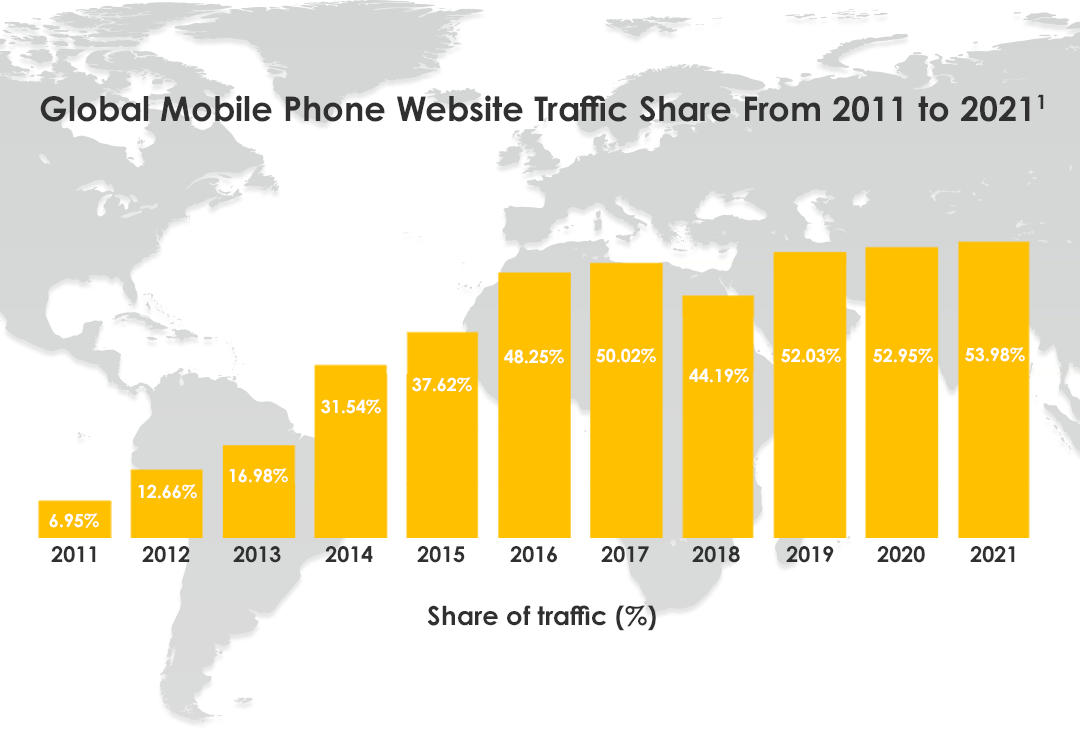How accessible is your website for mobile devices?
Have you ever visited a website that was not mobile-friendly? Having to drag the page so you could read it, or copying phone numbers because they weren’t linked to your phone app probably frustrated you so much that you left without completing your errand. Whenever users encounter similar obstacles, they are five times more likely to leave a site – without receiving the required information, service or product or worse still without ever returning.
The importance of mobile friendly design is rising. In the last 10 years, website traffic from mobile devices has seen a significant increase. In 2021 alone, around 55%, i.e. more than half the global web traffic was generated entirely via mobile access.1 This is mainly due to the fact that users conduct their searches on the smartphone or tablet they carry. The increased use of social media platforms only adds to the higher mobile access rates.
And the conclusion is?
Successful and future-proof website development and/or maintenance should revolve around optimising the site for mobile devices at least as much as for desktop use.

What does it mean to have a mobile friendly website?
Mobile friendly websites mainly focus on improving the user interface (UI). They adapt to the smaller screens of smart devices and will modify your website content for optimal use. Images are integrated in a smaller size, resulting in faster loading times for mobile connections.
By customising the view, the website will be easier to navigate and provide a better user experience (UX). Users can find the information that is relevant to them and even more importantly that the site offers the functionalities that ensure optimal mobile use. I.e., telephone numbers or email addresses are clickable, and content is sharable, providing faster and easier interaction for the user. Interactive features are particularly relevant if you are also planning to advertise your site by distributing content via social media channels.
What are the disadvantages of a merely desktop-based website?
If you are still not convinced that mobile website design is the way to go, here is another fact: Page speed not only in terms of user experience, but also in terms of search engine optimization (SEO) is a vital determinant for your ranking factor. As soon as websites take too long to load and/or are non-adaptive, search engines will rank them lower on the list of browser search results. If you count on being found in browser searches, the likelihood that potential customers will see you will drop dramatically.
Statistics also show that more than half of the users leave your website if it takes longer than three seconds to load. This is an alarming figure and shows how important it is to optimise your site.
If you have any further questions on this and/or would like us to put your website through the mobile acid test and improve its accessibility, please contact us at info@infill.com.
1 https://www.oberlo.com/statistics/mobile-internet-traffic as accessed on 15 February 2022









